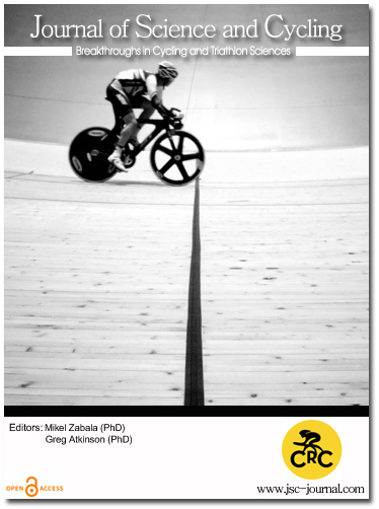The development and validation of an inertial sensor for measuring cycling kinematics: a preliminary study
DOI:
https://doi.org/10.28985/1221.jsc.08Keywords:
wearables, accelerometer, triathlon, torso center of mass, cyclingAbstract
A biomechanical variable of interest to cyclists and cycling coaches is postural stability. A cyclist’s position on a bicycle can be easily measured in a laboratory environment using motion capture software, but is difficult to measure in the field. The focus of this paper was to identify the legitimacy of a sacrum mounted triaxial accelerometer to identify temporal acceleration magnitudes of the centre of mass (CoM) whilst cycling against a motion analysis system. To provide validation of the sensor, data was collected at the torso as cyclists pedaled at varied cadences against a motion analysis system. The effects of cycling cadence and changes to torso angle via changes to hand position revealed that wearable technology (accelerometers) provide legitimacy in the assessment of torso accelerations during cycling. The minimal variation and change in agreement between the two systems during cycling indicates the adherence method of the accelerometer was suitable.
Downloads
Published
How to Cite
Issue
Section
Copyright (c) 2021 Journal of Science and Cycling

This work is licensed under a Creative Commons Attribution-NonCommercial-NoDerivatives 4.0 International License.
Authors contributing to Journal of Science and Cycling agree to publish their articles under a Creative Commons CC BY-NC-ND license, allowing third parties to copy and redistribute the material in any medium or format, and to remix, transform, and build upon the material, for any purpose, even commercially, under the condition that appropriate credit is given, that a link to the license is provided, and that you indicate if changes were made. You may do so in any reasonable manner, but not in any way that suggests the licensor endorses you or your use.
Authors retain copyright of their work, with first publication rights granted to Cycling Research Center.






